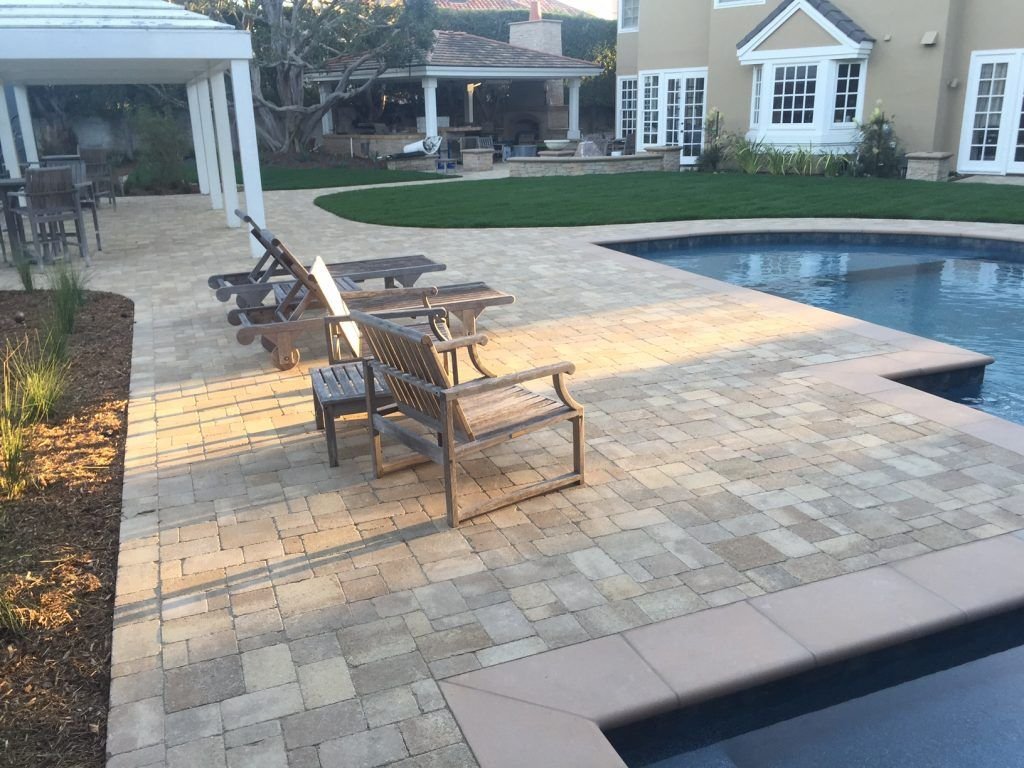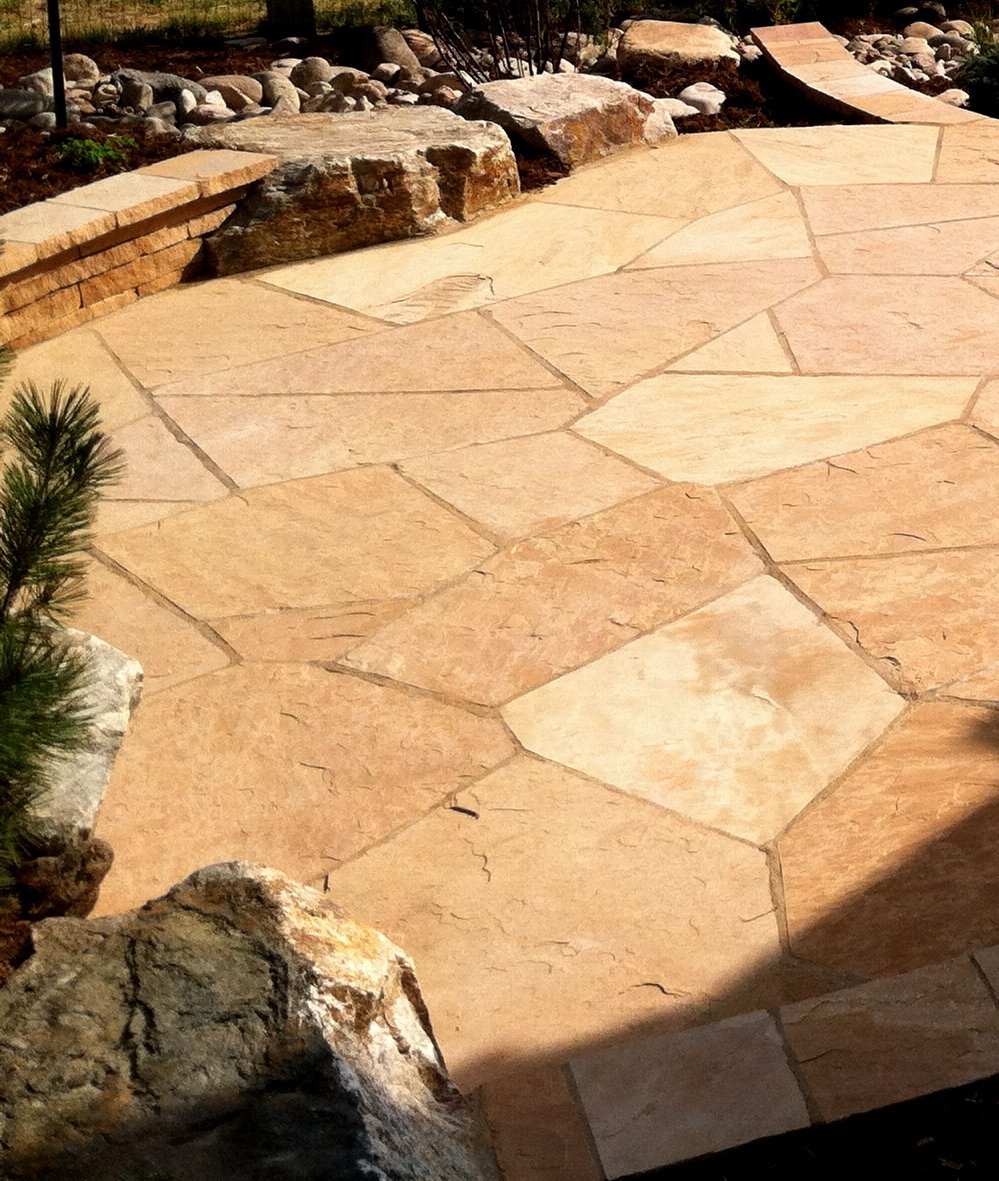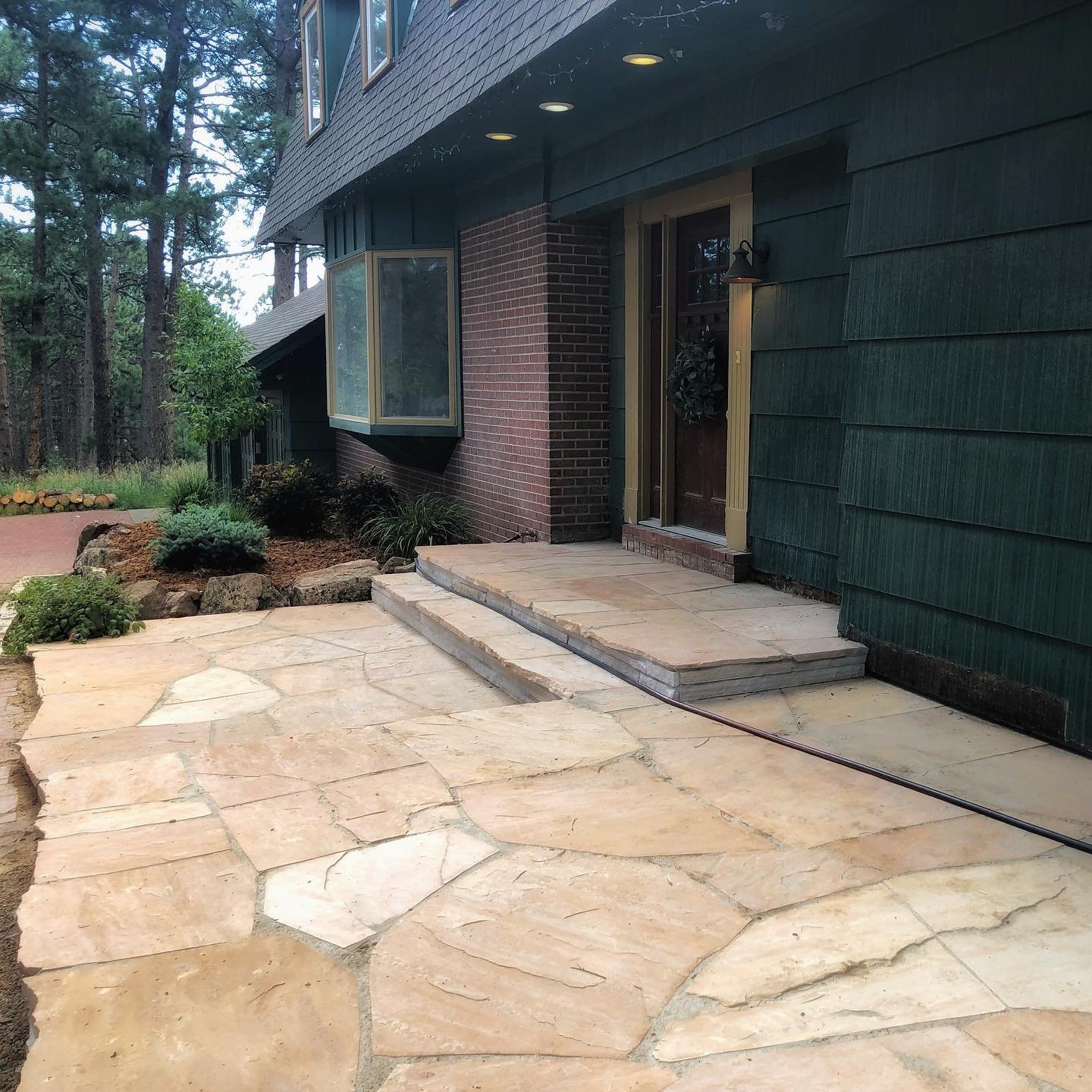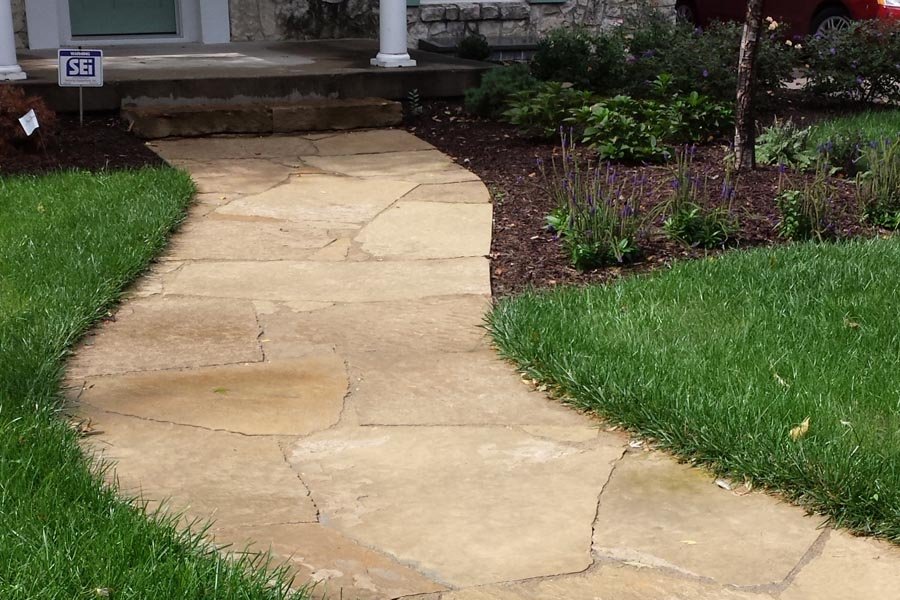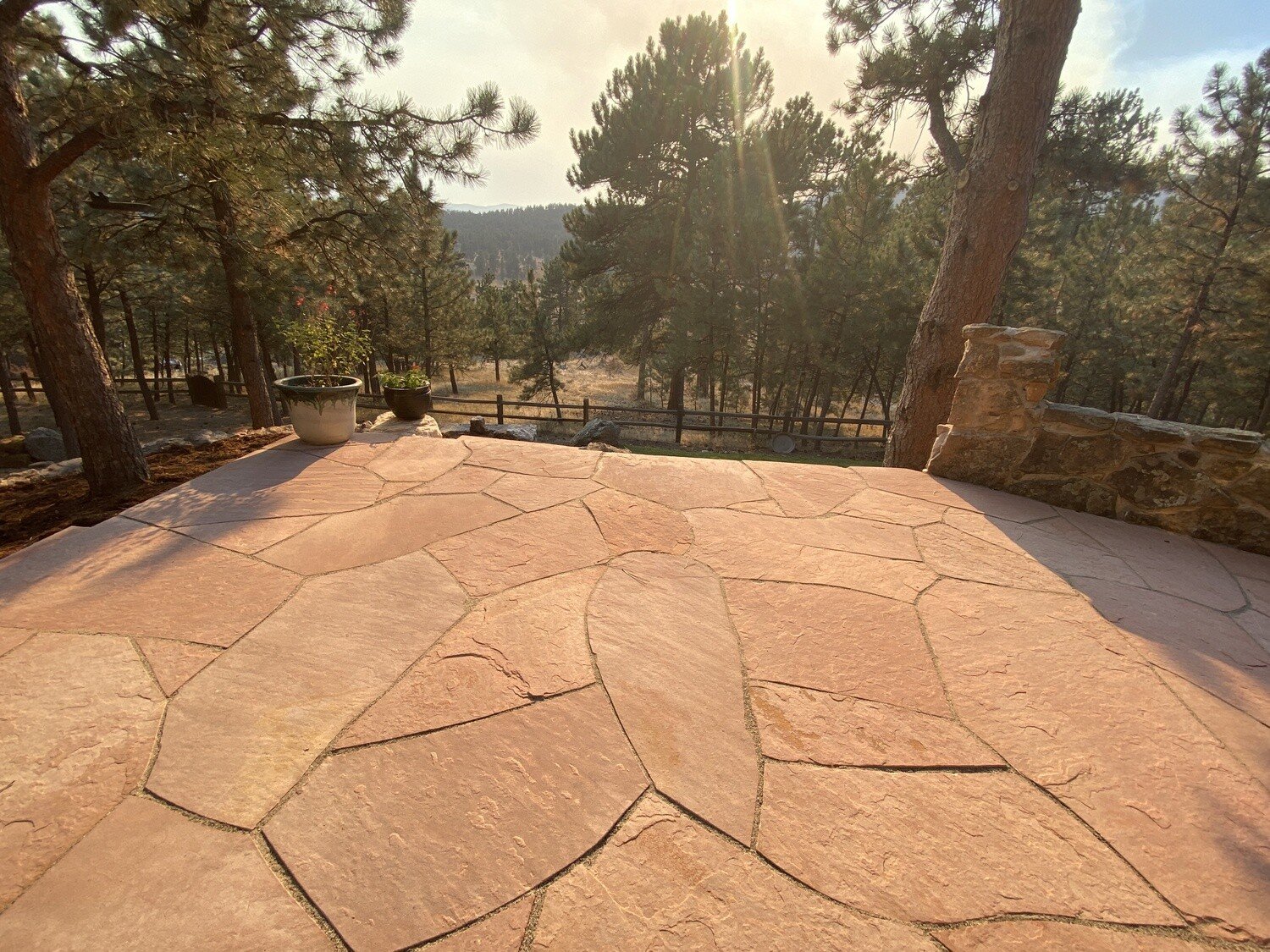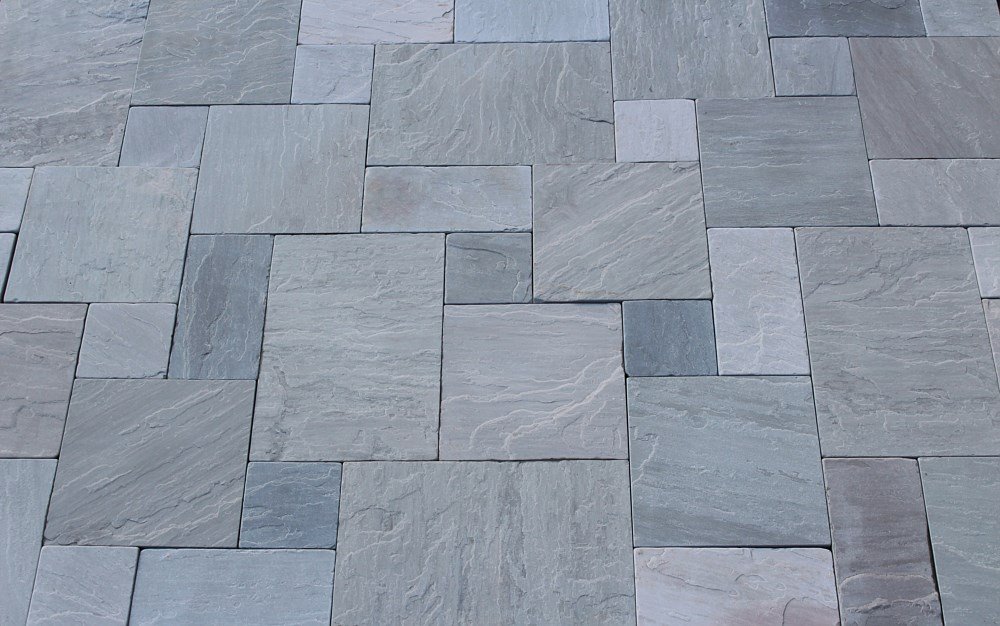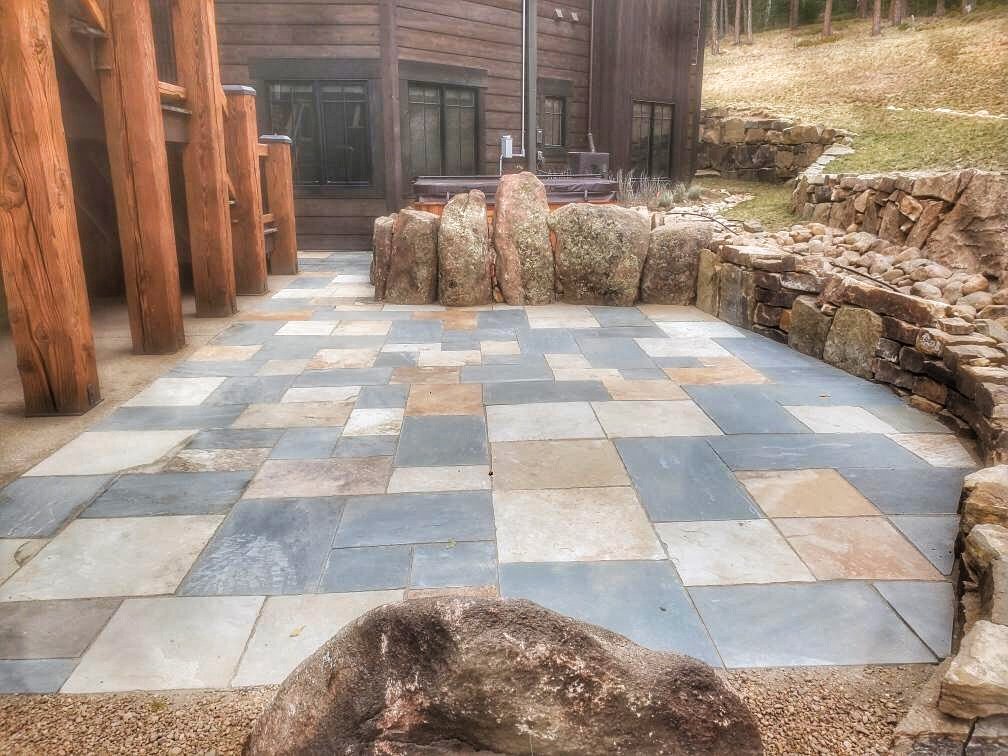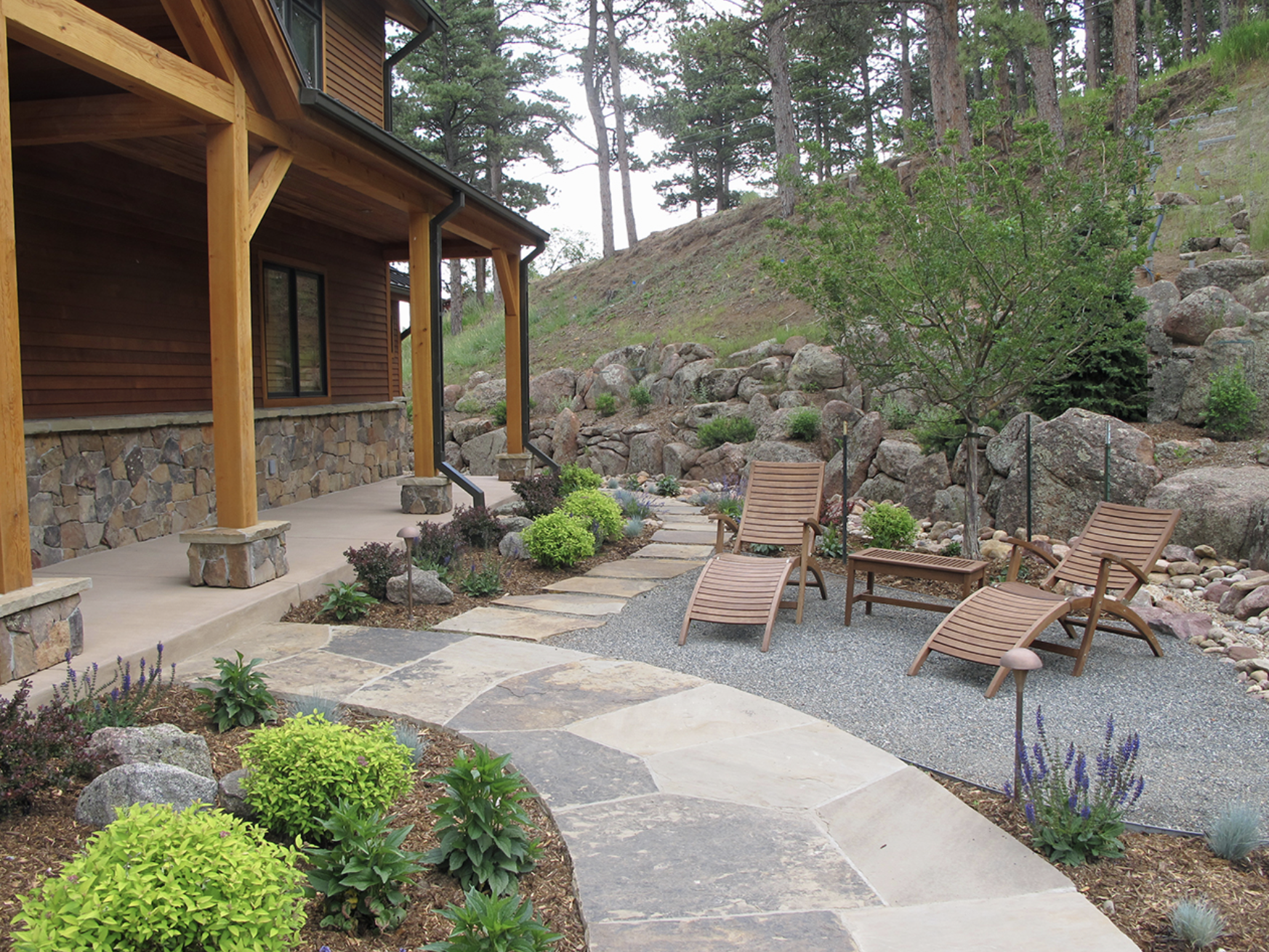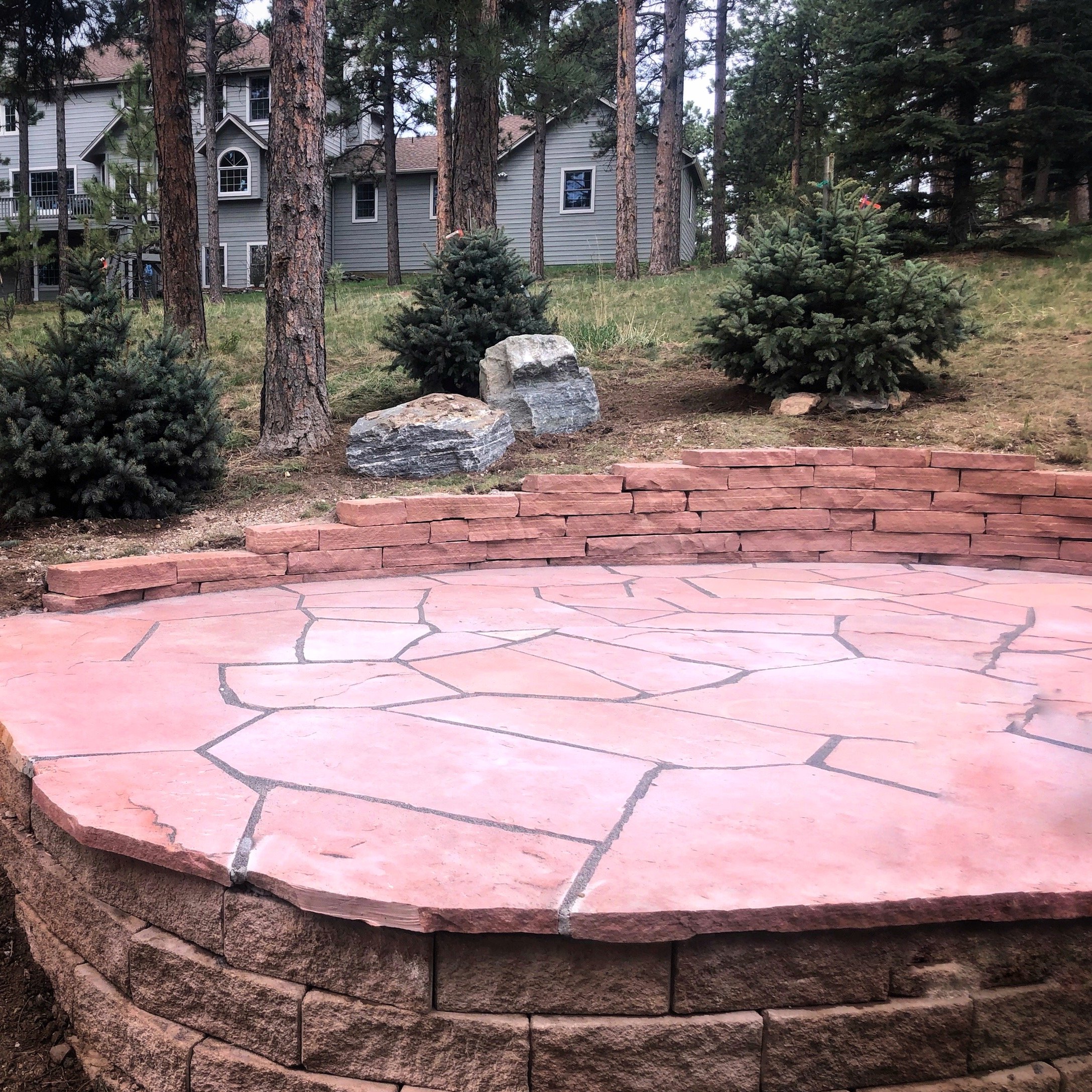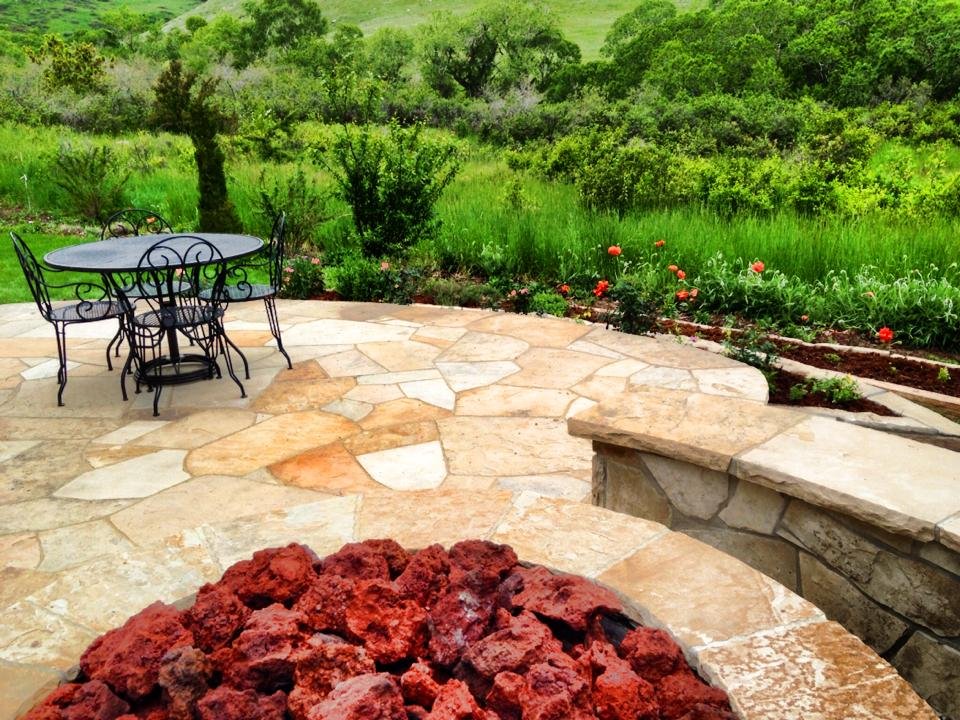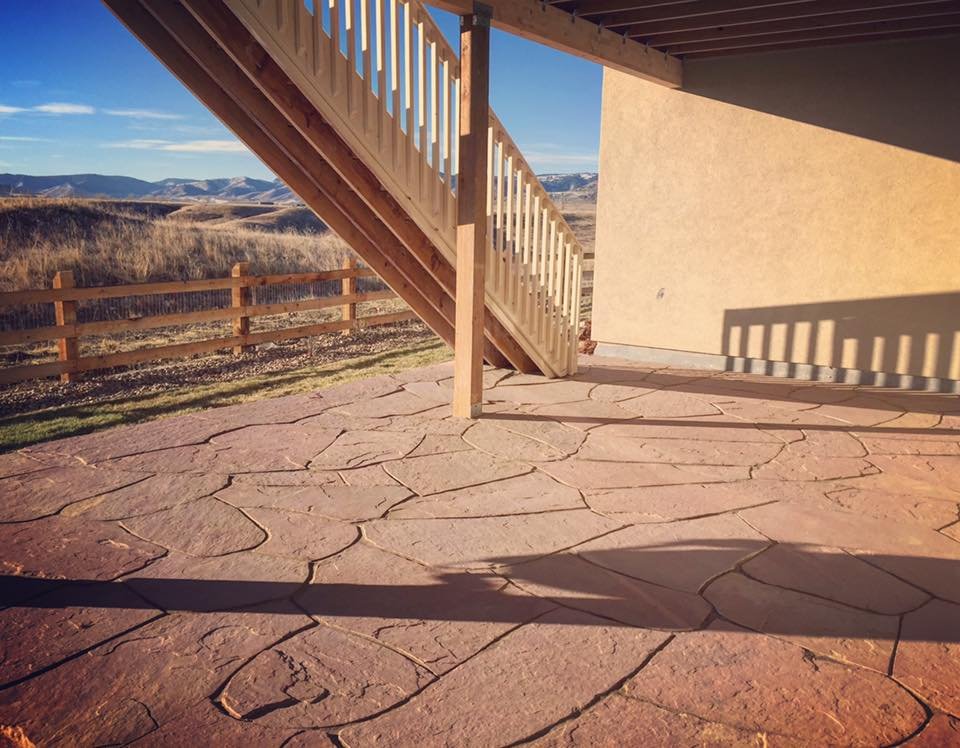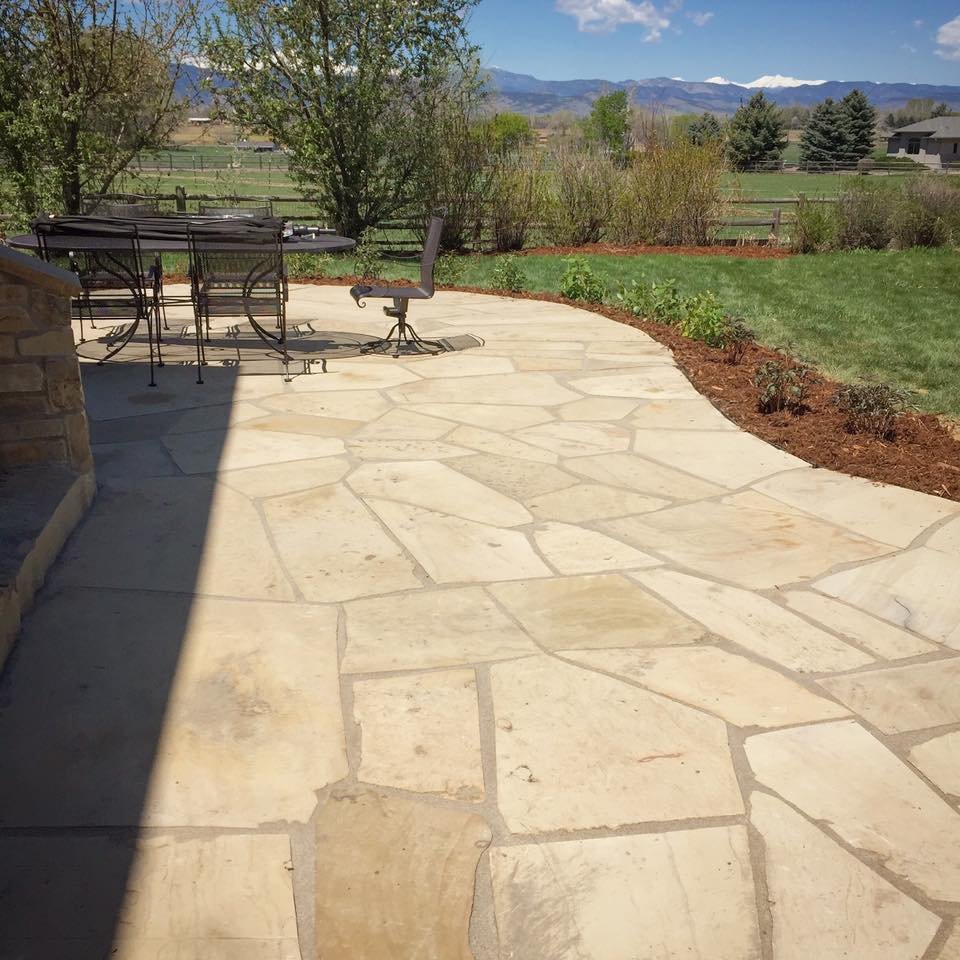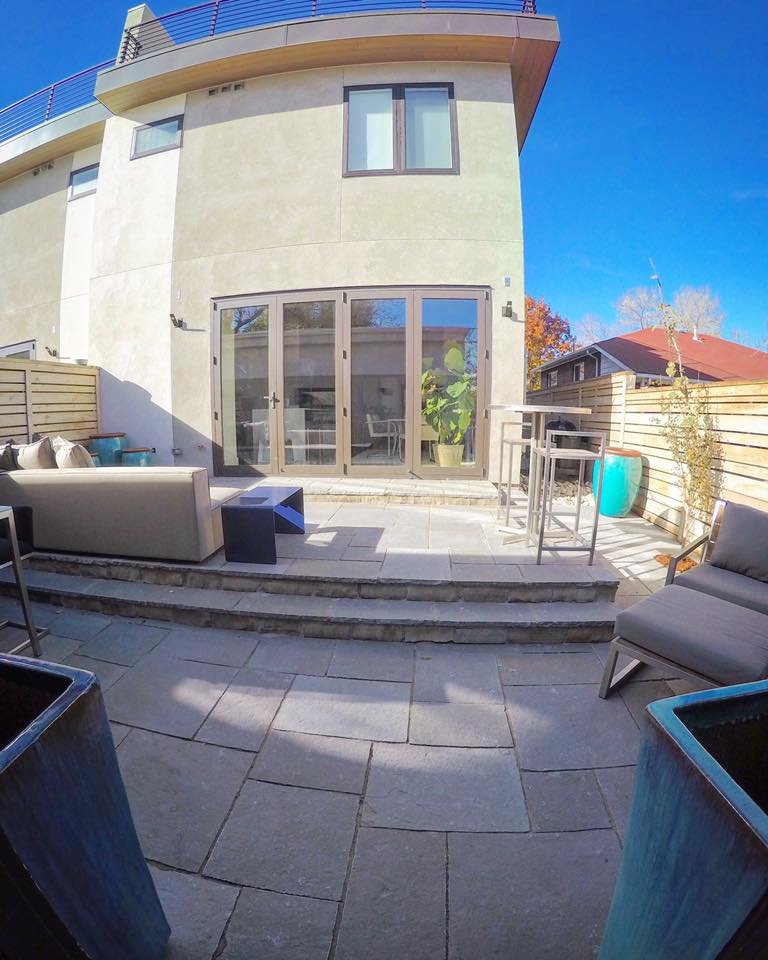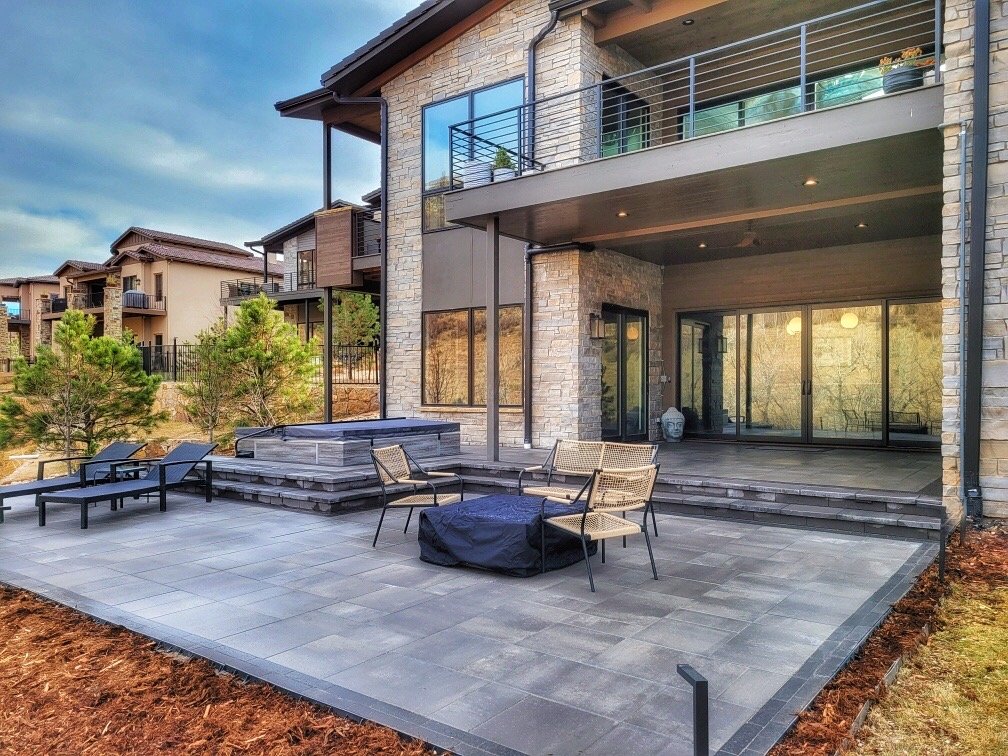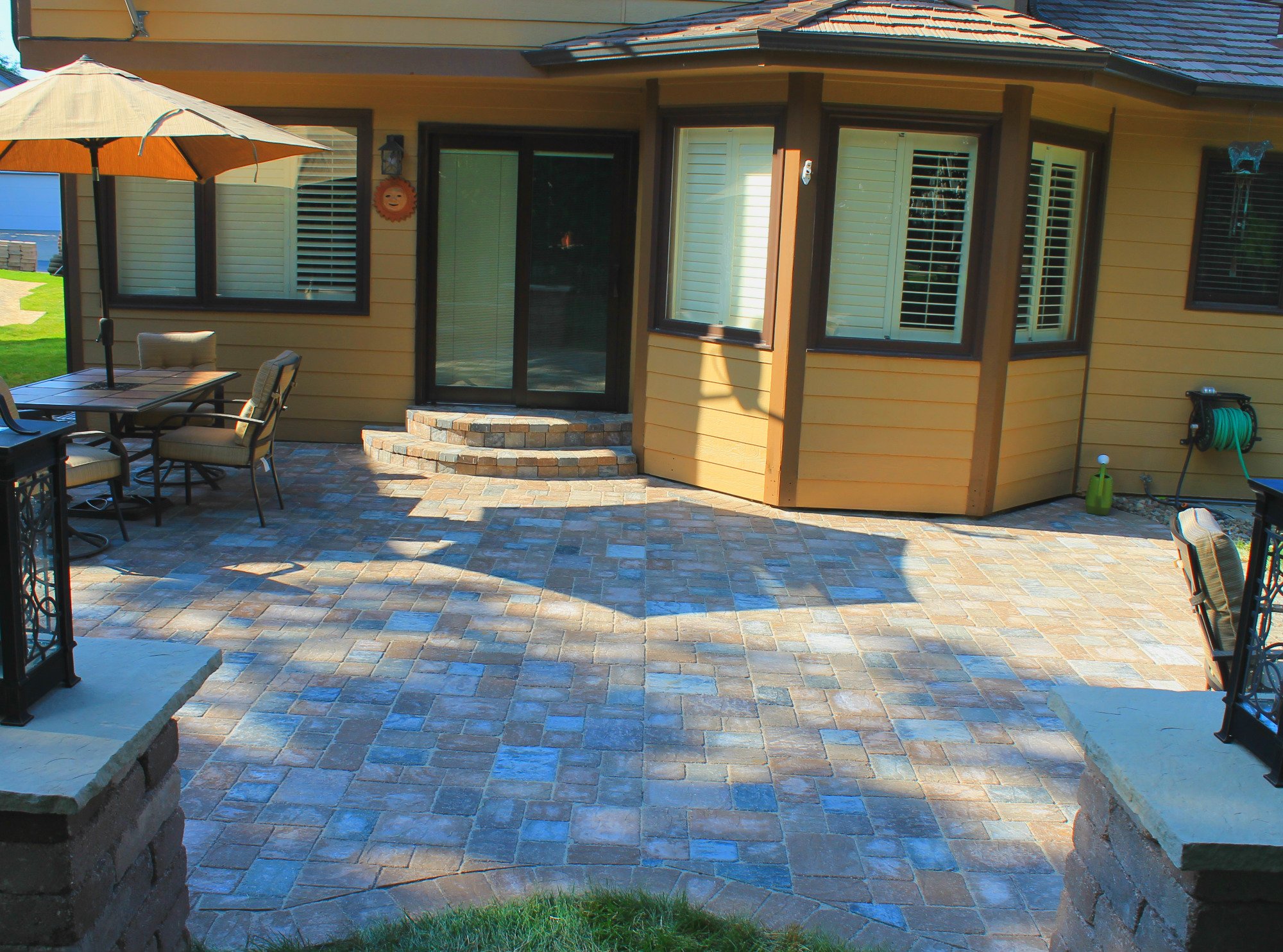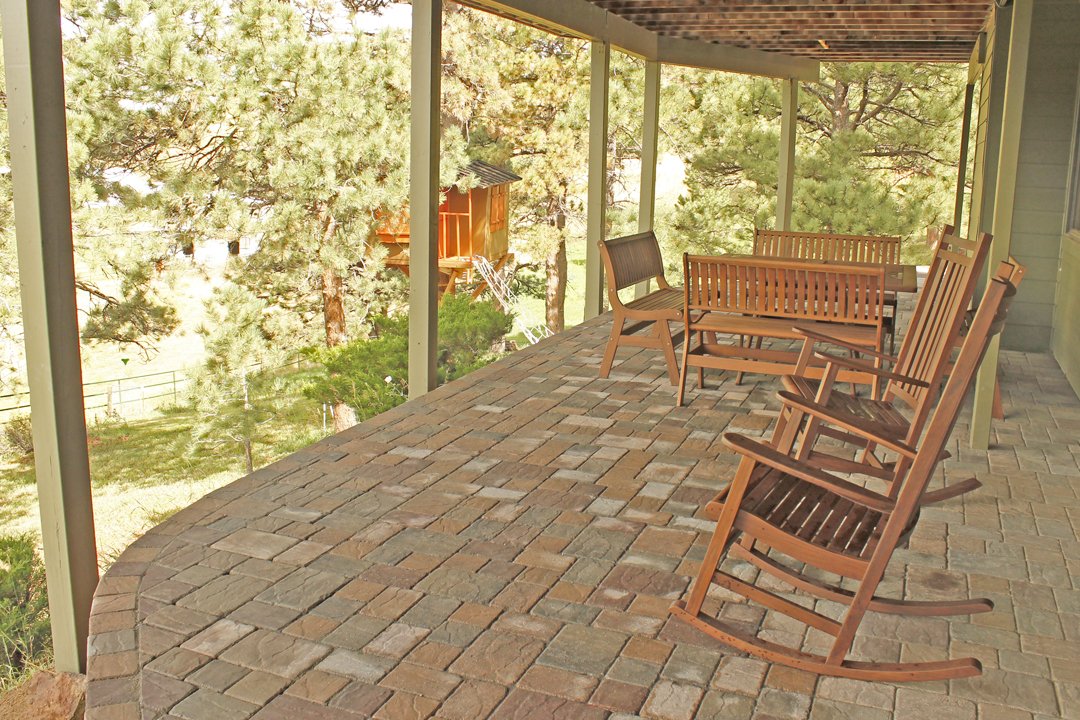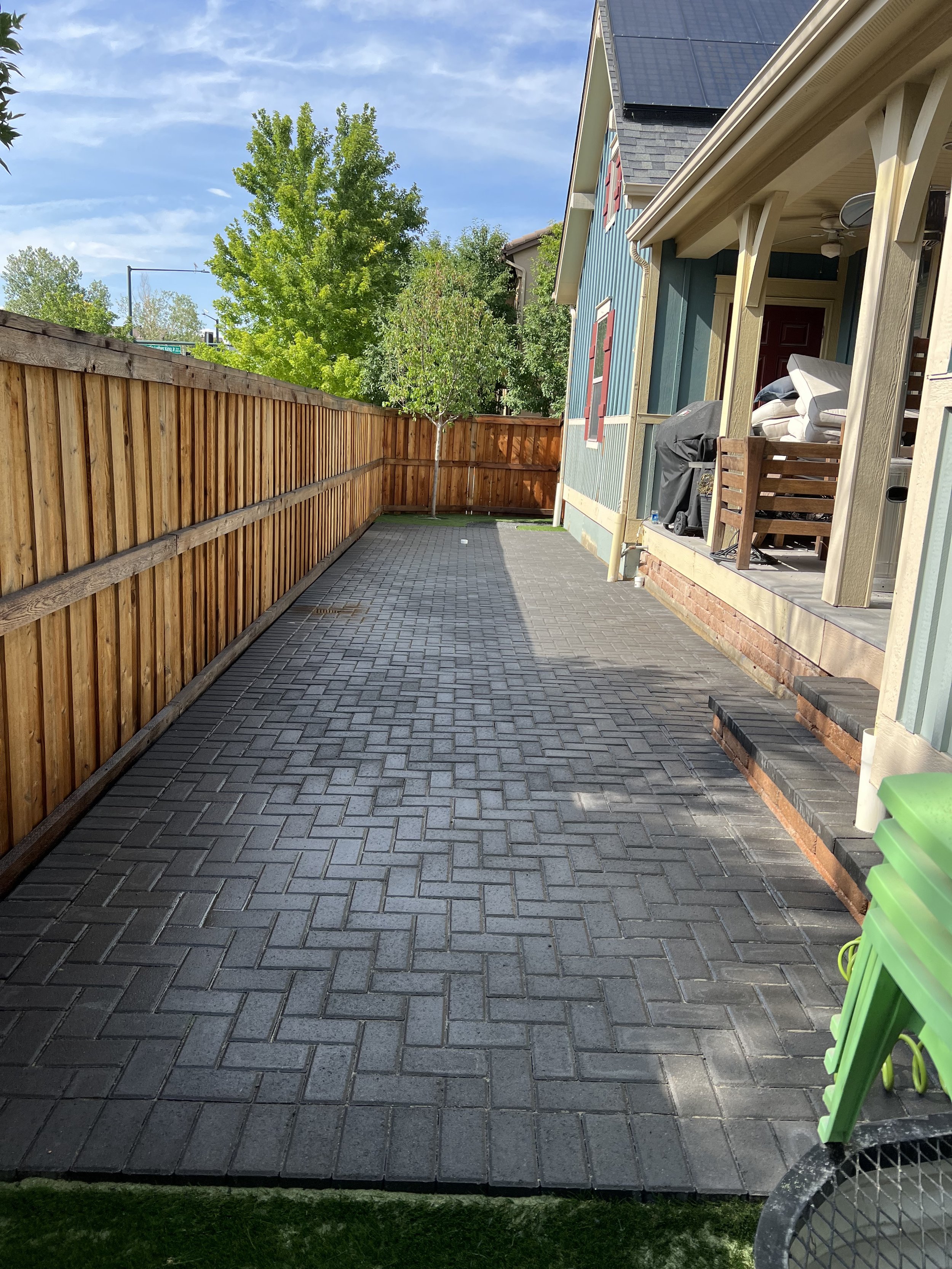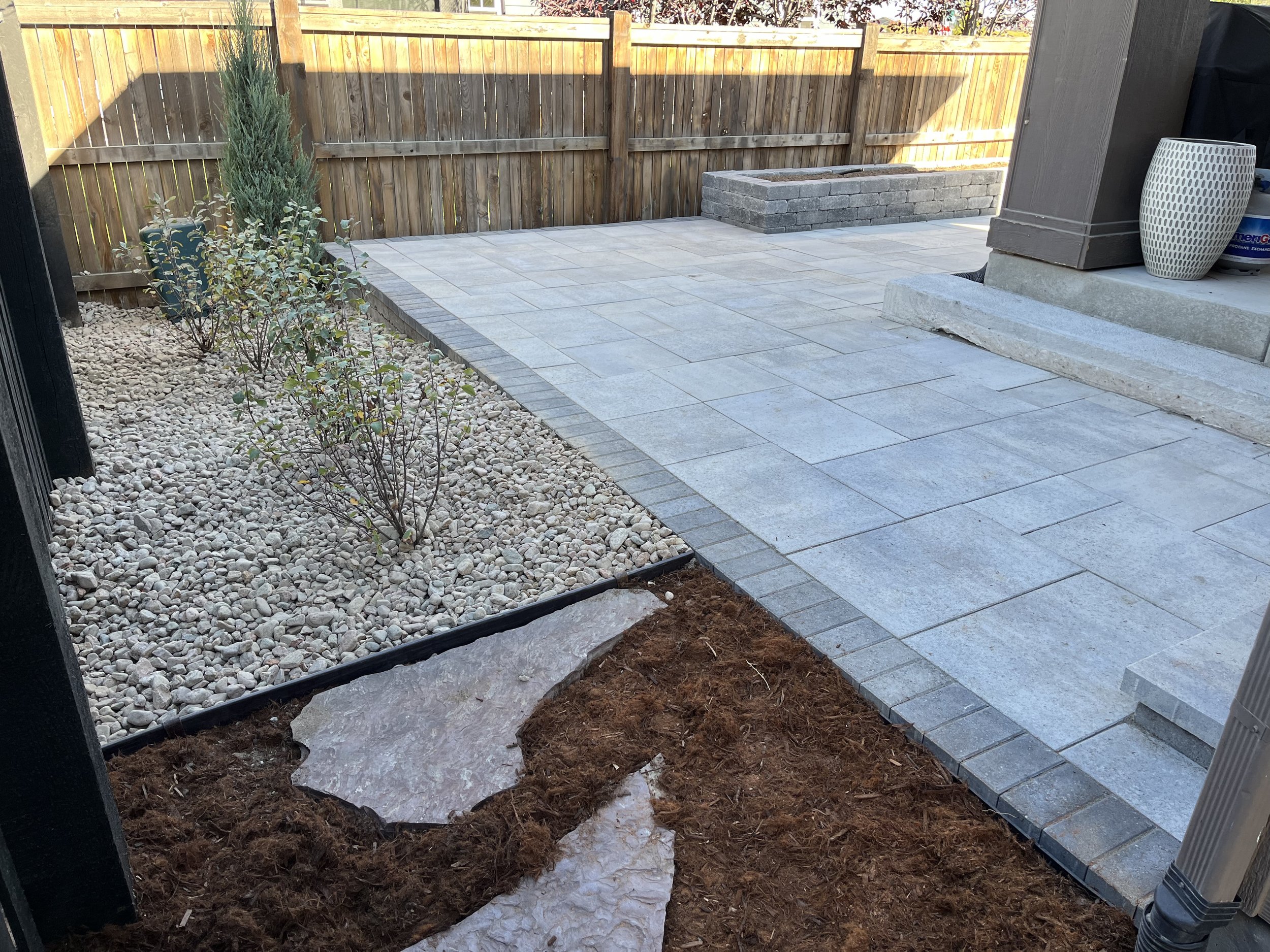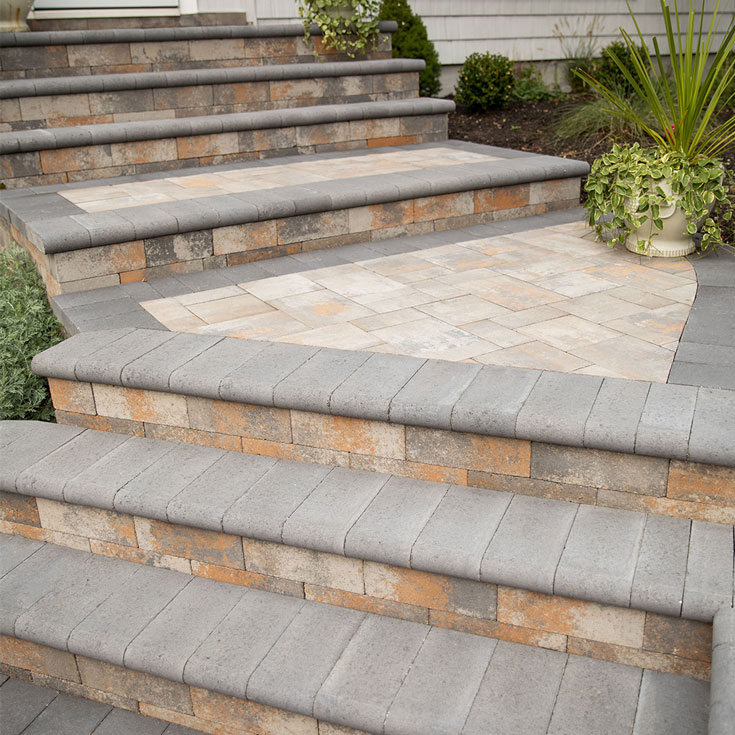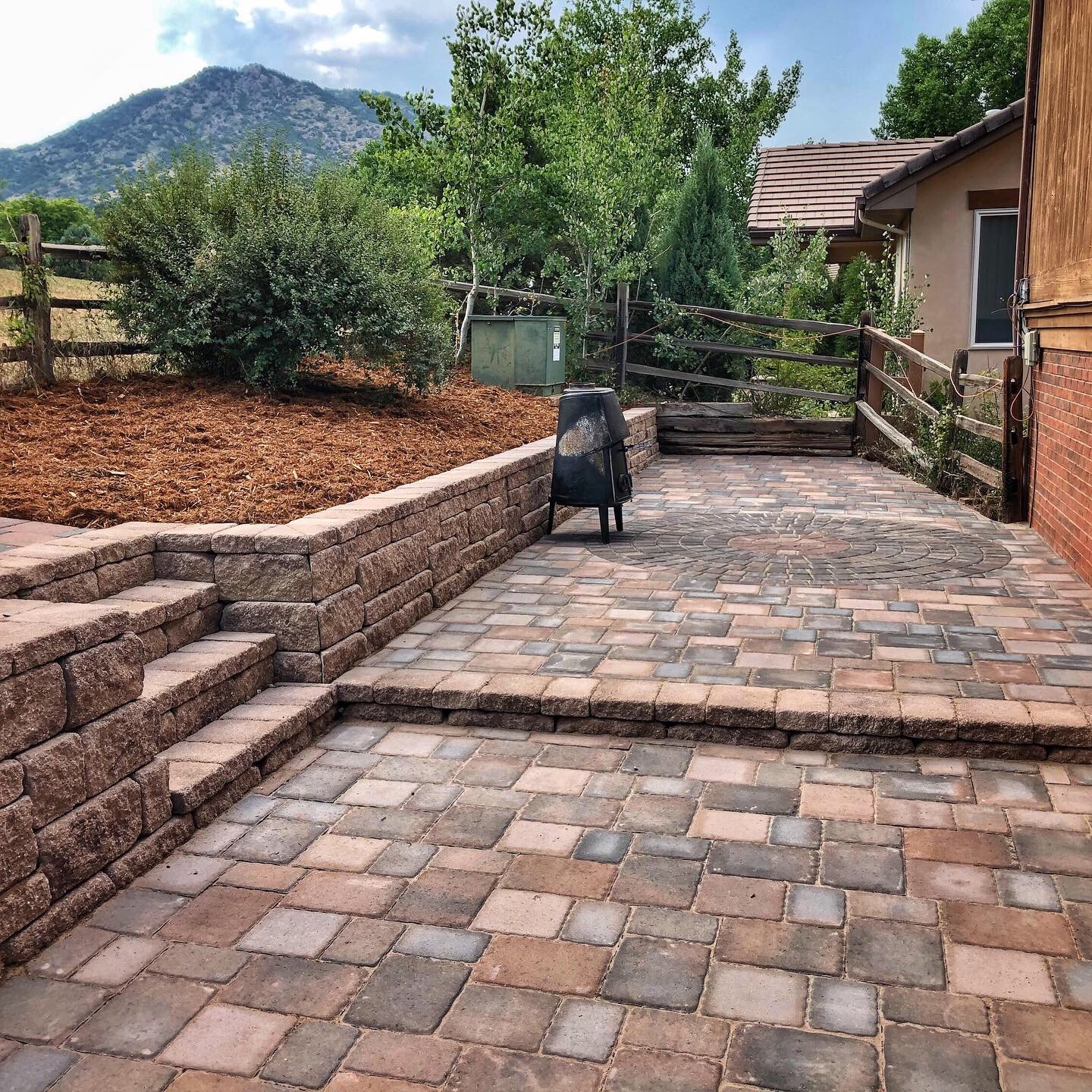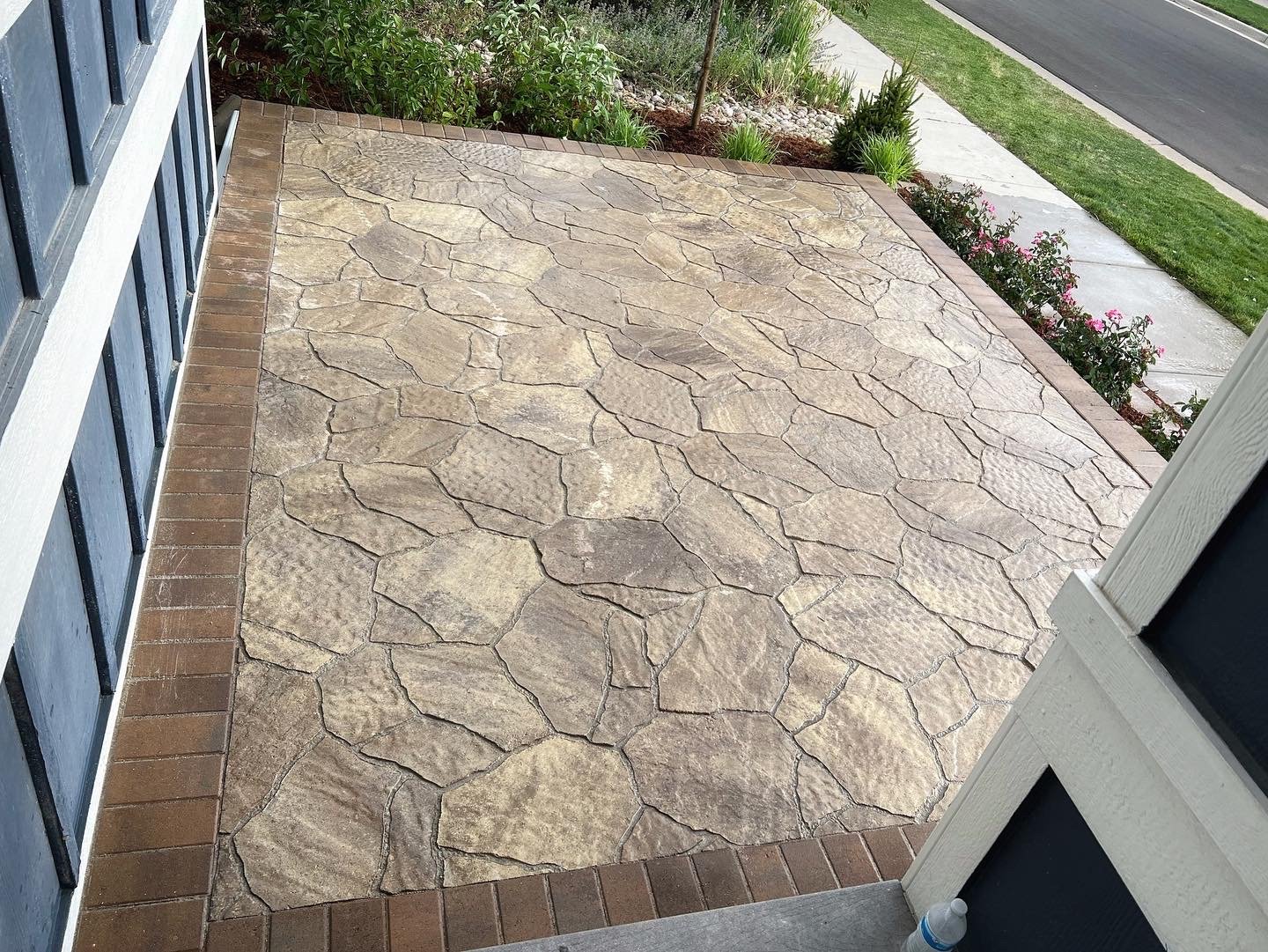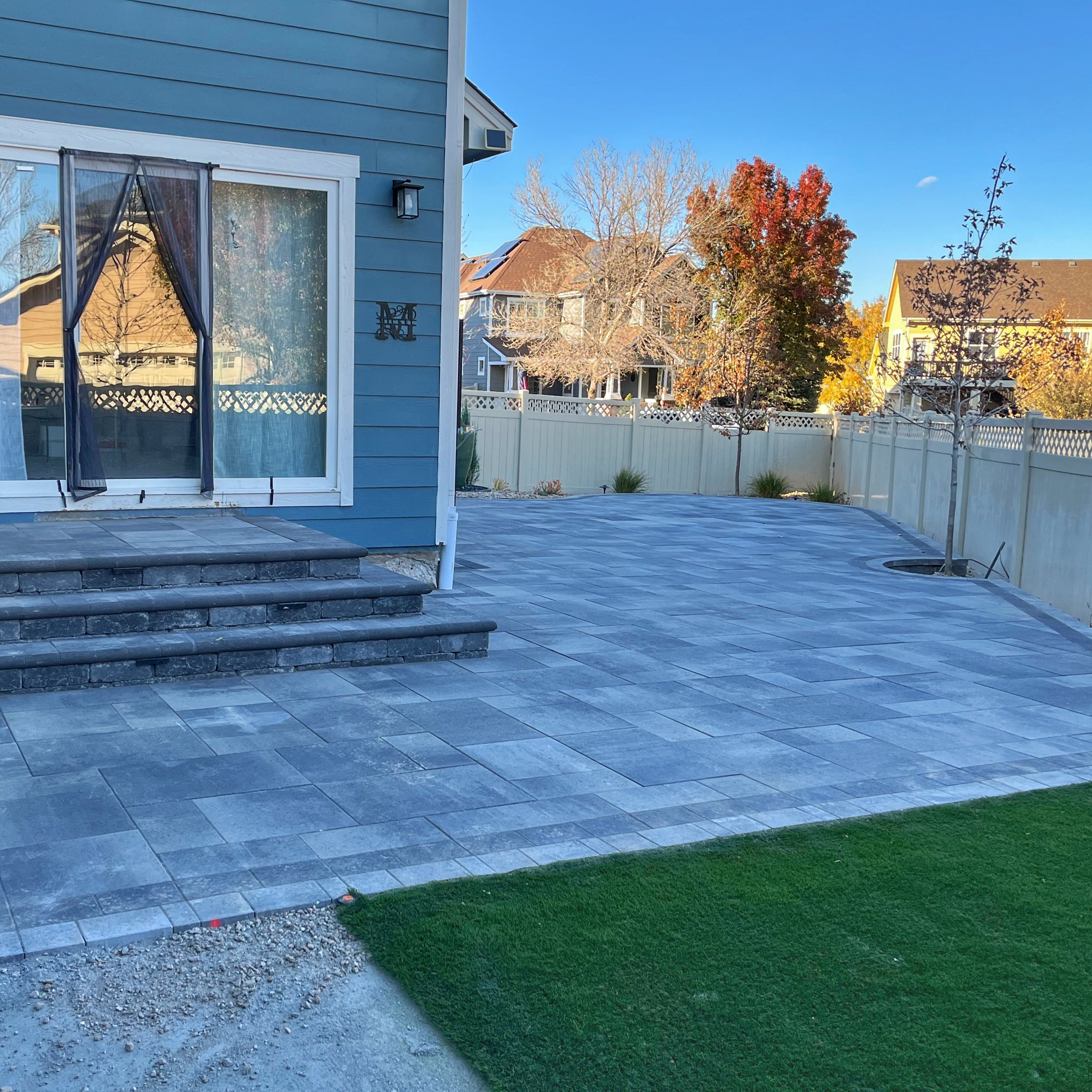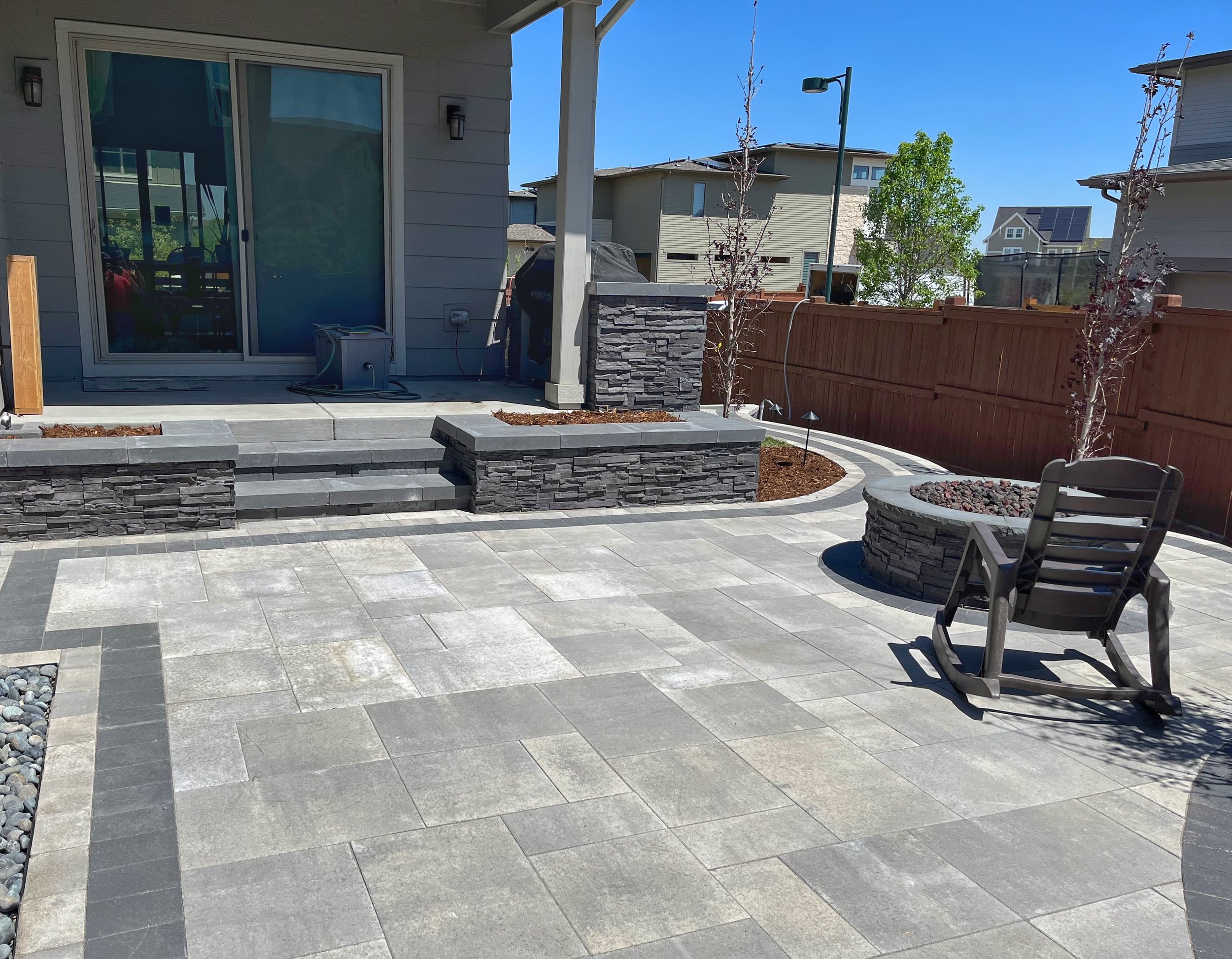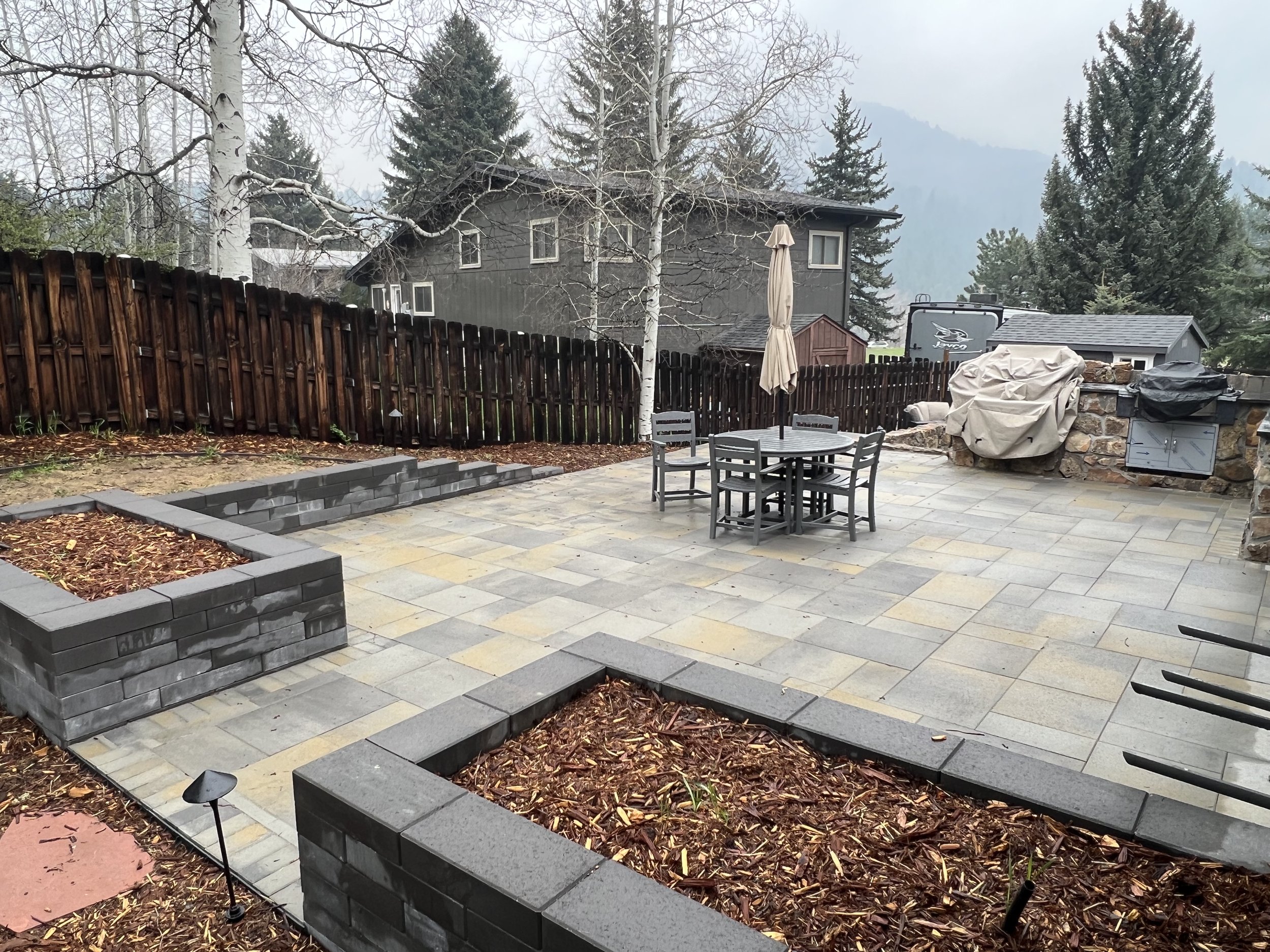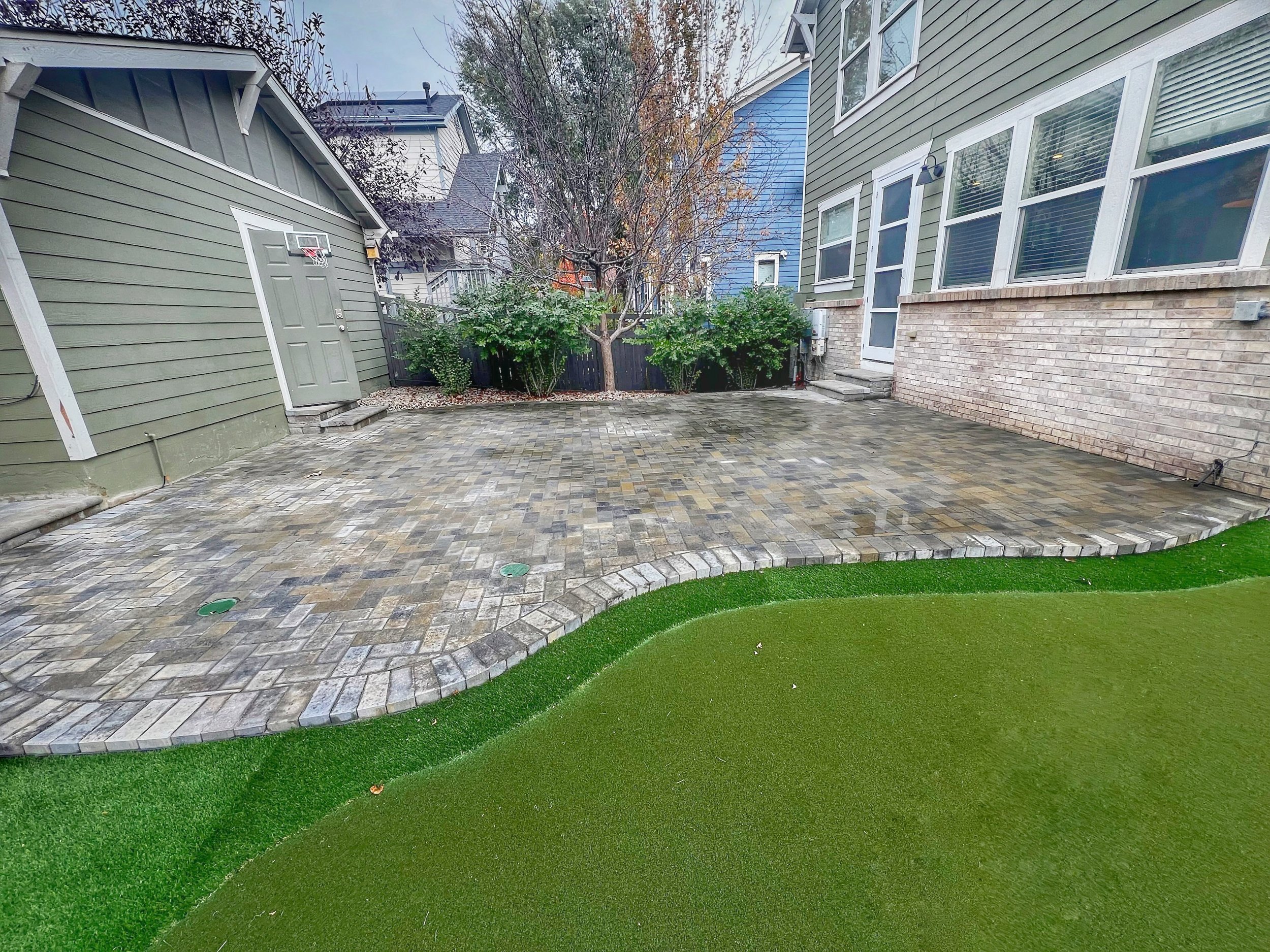Flagstone vs Pavers: Which is the Right Choice For You?
When it comes to creating a stunning outdoor living space, the choice between flagstone and paver patios often presents itself. Both options offer unique aesthetics and practical benefits, but understanding the pros and cons of each can help you make an informed decision. In this blog, we'll explore the advantages and disadvantages of flagstone and paver patios to help you choose the perfect option for your home.
Natural Flagstone
Concrete Pavers
FLAGSTONE
PROS
Natural Beauty: Flagstone's natural appearance adds rustic charm and timeless elegance to outdoor spaces. Its unique color variations and irregular shapes create a visually appealing surface that complements a range of architectural styles.
Durability: Flagstone is a durable material that can withstand harsh weather conditions, heavy foot traffic, and temperature fluctuations. When properly installed and sealed, it can last for decades with minimal maintenance.
Versatility: Flagstone's versatility allows for creative design possibilities. Its irregular shapes can be arranged in various patterns, and it can be used for pathways, patios, and even pool decks.
Slip Resistance: The textured surface of flagstone provides excellent slip resistance, making it a safe option for outdoor areas, especially around pools and water features.
Environmentally Friendly: Since flagstone is a natural stone, it is an environmentally friendly choice that requires minimal processing and energy consumption during production.
CONS
Cost: Flagstone is typically more expensive than concrete pavers, making it a higher upfront investment for homeowners.
Installation Complexity: Installing flagstone requires skill and expertise due to its irregular shapes and sizes. Proper preparation of the base and meticulous placement are essential to ensure a level and stable surface.
Maintenance: While flagstone is durable, it requires periodic sealing to protect against stains and moisture penetration. Additionally, weeds and moss may grow between the stones, requiring regular maintenance to keep the patio looking pristine.
PAVERS
PROS
Affordability: Concrete pavers are generally more affordable than natural stone, making them a cost-effective option for homeowners on a budget.
Uniformity: Pavers are manufactured to precise dimensions, resulting in a uniform surface that is easy to install and creates clean lines and patterns.
Low Maintenance: Paver patios are relatively low maintenance compared to natural stone. They are resistant to staining, fading, and cracking, and can be easily replaced if damaged.
Variety of Colors and Styles: Concrete pavers come in a wide range of colors, shapes, and textures, allowing homeowners to customize their patio to suit their aesthetic preferences and design vision.
Ease of Installation: Pavers are uniform in size and shape, making them easier to install than flagstone. The interlocking design creates a stable surface that requires minimal preparation.
CONS
Lack of Natural Aesthetics: While concrete pavers offer versatility in design, they lack the natural beauty and character of flagstone.
Potential for Weeds: Although pavers are resistant to weeds, they may still develop between the joints over time, requiring occasional maintenance.
Limited Durability: While concrete pavers are durable, they may crack or chip over time, especially in regions with extreme weather conditions or heavy use.
Both flagstone and paver patios offer distinct advantages and drawbacks, making them suitable options for different homeowner preferences and budgets. Ultimately, the choice between the two comes down to factors such as aesthetics, budget, maintenance requirements, and installation complexity. By weighing the pros and cons of each material, you can select the perfect patio option to enhance your outdoor living space and create a beautiful and functional environment for years to come.


